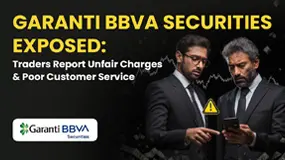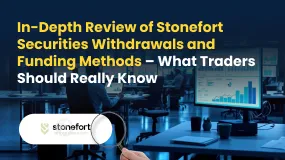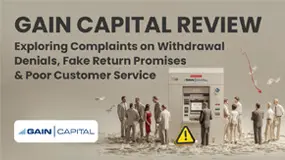简体中文
繁體中文
English
Pусский
日本語
ภาษาไทย
Tiếng Việt
Bahasa Indonesia
Español
हिन्दी
Filippiiniläinen
Français
Deutsch
Português
Türkçe
한국어
العربية
Ukraine’s creditors agree 2-year freeze on $20 billion overseas debt.
Abstract:Ukraine’s overseas creditors backed its request for a two-year freeze on payments on almost $20 billion in international bonds, a regulatory filing showed on Wednesday, a move that will allow the war-ravaged country to avoid a messy debt default.

With no sign of peace or a ceasefire on the horizon nearly six months after Russia‘s invasion began, holders of around 75% of the outstanding total agreed to Kyiv’s proposal, documents showed.
“Ukraine will save almost $6 billion on payments,” said Prime Minister Denys Shmyhal in a statement. “These funds will help us maintain macrofinancial stability, strengthen the sustainability of the Ukrainian economy and improve the power of our army.”
The solicitation needed approval by holders of at least two-thirds of the total and more than 50% of each issue.
“The two-year debt freeze makes sense because even if the war ends soon, Ukraines situation is not going to improve overnight,” said Stuart Culverhouse, chief economist at London-based research firm Tellimer. “Creditors were even surprised that the country decided to be current on the bonds until now.”
BlackRock Inc, Fidelity International, Amia Capital and Gemsstock Ltd are among the biggest holders of Ukraines debt, whose market value has slumped by more than 80% since a build-up of Russian troops on its borders began late in 2021.
“Creditors made some suggestions during the process that were reasonable, so the consent moved forward,” Stefan Weiler, head of CEEMEA debt capital markets at JPMorgan, said on Thursday. “There was more sensitivity in the short-term bonds.”
Kyiv had appointed JPMorgan as sole solicitation agent.
A separate but related consent solicitation approved by creditors allows changes to about $2.6 billion of GDP warrants, a derivative security that triggers payments linked to a countrys gross domestic product.
Creditors of Ukravtodor and Ukrenergo, two state-owned firms that have government guarantees on their debt, have approved separate solicitations similar to the one proposed by the sovereign.
Debt relief
With Ukraine facing an estimated economic contraction of as much as 45% in 2022, bilateral creditors including the United States, Britain and Japan had also backed a debt repayment delay and a group of governments in the Paris Club agreed to suspend payments until the end of 2023.
“This will improve the foreign currency cash flow for Ukraine, but by itself its unlikely to be sufficient to stabilize FX reserves,” said Carlos de Sousa, emerging markets debt portfolio manager at Vontobel Asset Management.
Ukraines international reserves fell to $22.4 billion at the end of July from $28.1 billion in March.
A comprehensive debt restructuring is expected following the debt freeze, De Sousa said, as it is “unlikely” that Ukraine will be able to regain market access in two years.
Ukraine completed a $15 billion debt restructuring in late 2015 after an economic crisis linked to a Russian-backed insurgency in its industrial east. The deal left it with a large number of payments due annually between 2019 and 2027, and it returned to international markets in 2017.
With a monthly fiscal shortfall of $5 billion, Ukraine is heavily reliant on foreign financing from Western allies and multilateral lenders including International Monetary Fund (IMF) and the World Bank.
It has so far received $12.7 billion in loans and grants, Finance Ministry data shows.
The United States said this week it would provide an additional $4.5 billion to Ukraines government, bringing its total budgetary support since Moscow began what it calls a “special military operation” to $8.5 billion.
Ukraine also aims to agree a $15 billion-$20 billion IMF programme to help shore up its economy, its central bank governor said, and the government expects to receive this assistance before the year-end.

Disclaimer:
The views in this article only represent the author's personal views, and do not constitute investment advice on this platform. This platform does not guarantee the accuracy, completeness and timeliness of the information in the article, and will not be liable for any loss caused by the use of or reliance on the information in the article.
Read more

Garanti BBVA Securities Exposed: Traders Report Unfair Charges & Poor Customer Service
Have you been financially ruined through chargebacks allowed by Garanti BBVA Securities? Do you have to wait for hours to get your queries resolved by the broker’s customer support official? Did the same scenario prevail when you contact the officials in-person? Failed to close your account as Garanti BBVA Securities officials remained unresponsive to your calls? Many have expressed similar concerns while sharing the Garanti BBVA Securities review online. In this article, we have shared some complaints against the broker. Take a look!

In-Depth Review of Stonefort Securities Withdrawals and Funding Methods – What Traders Should Really
For any experienced forex and CFD trader, the mechanics of moving capital are as critical as the trading strategy itself. The efficiency, security, and transparency of a broker's funding procedures form the bedrock of a trustworthy, long-term trading relationship. A broker can offer the tightest spreads and the most advanced platform, but if depositing funds is cumbersome or withdrawing profits is a battle, all other advantages become moot. This review provides a data-driven examination of Stonefort Securities withdrawals and funding methods. We will dissect the available information on payment options, processing times, associated costs, and the real-world user experience. Our analysis is anchored primarily in data from the global broker regulatory inquiry platform, WikiFX, supplemented by a critical look at publicly available information to provide a comprehensive and unbiased perspective for traders evaluating this broker.

MH Markets Deposits and Withdrawals Overview: A Data-Driven Analysis for Traders
For any experienced trader, the integrity of a broker is not just measured by its spreads or platform stability, but by the efficiency and reliability of its financial plumbing. The ability to deposit and, more importantly, withdraw capital without friction is a cornerstone of trust. This review provides an in-depth, data-driven analysis of the MH Markets deposits and withdrawals overview, examining the entire fund management lifecycle—from funding methods and processing speeds to fees and potential obstacles. MH Markets, operating for 5-10 years under the name Mohicans Markets (Ltd), has established a global footprint. With a WikiFX score of 7.08/10, it positions itself as a multi-asset broker offering a range of account types and access to the popular MetaTrader platforms. However, for a discerning trader, the real test lies in the details of its payment systems and the security of their funds. This article dissects the MH Markets funding methods withdrawal experience, leveraging pr

GAIN Capital Review: Exploring Complaints on Withdrawal Denials, Fake Return Promises & More
Is your forex trading experience with GAIN Capital full of financial scams? Does the broker disallow you from withdrawing your funds, including profits? Have you been scammed under the guise of higher return promises by an official? Does the GAIN Capital forex broker not have an effective customer support service for your trading queries? Concerned by this, many traders have shared negative GAIN Capital reviews online. In this article, we have discussed some of them. Read on!
WikiFX Broker
Latest News
GCash Rolls Out Virtual US Account to Cut Forex Fees for Filipinos
WikiFX's New Evaluation of ATM Capital LTD: Does its License Protect the Arab Investor?
How a Fake Moomoo Ad Led to the “New Dream Voyage 5” Scam
Is Axi Legit? A Data-Driven Analysis of Its Regulatory Standing and Trader Feedback
Trive Investigation: High Score, Hidden Risk - The Profit Paradox
In-Depth Uniglobe Markets Commission Fees and Spreads Analysis – What Traders Should Really Know
FXPesa Review: Are Traders Facing High Slippage, Fund Losses & Withdrawal Denials?
CMC Markets Australia Revenue Surges 34%, But High-Net-Worth Clients Face Tax Phishing Threat
The 350 Per Cent Promise That Cost Her RM604,000
INZO Commission Fees and Spreads Breakdown: A 2025 Data-Driven Analysis for Traders
Currency Calculator



